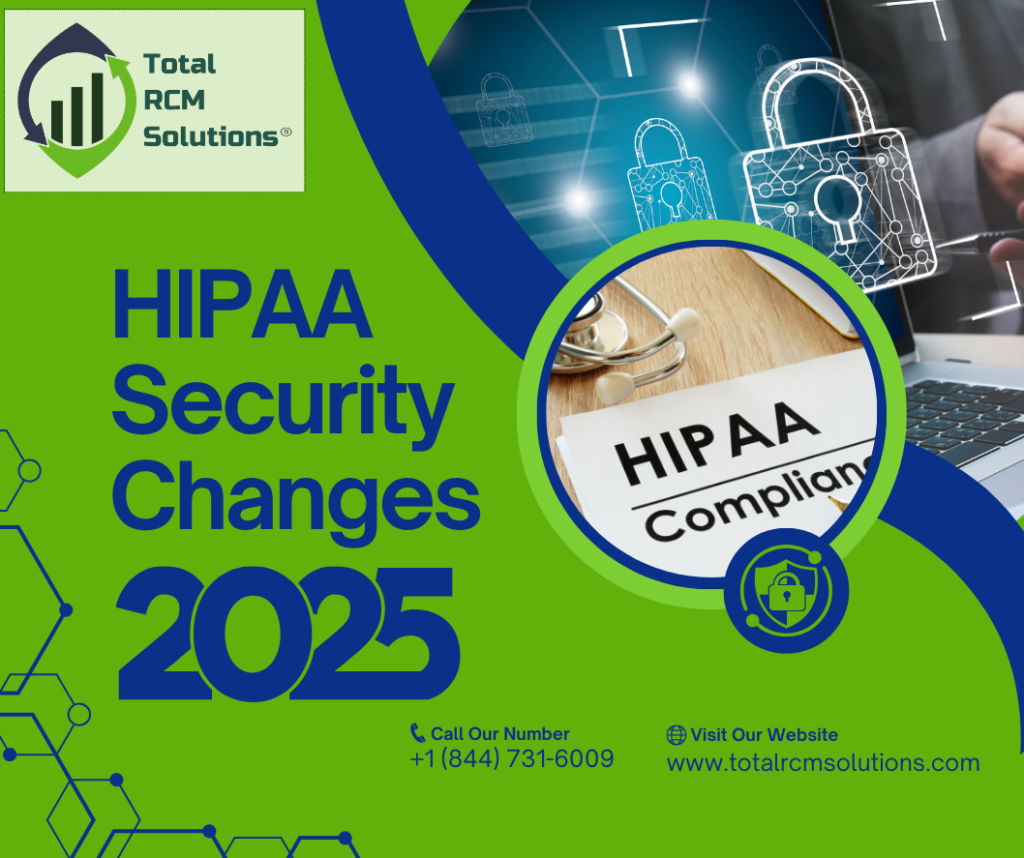The Health Insurance Portability and Accountability Act (HIPAA) Security Rule sets the standards for protecting electronic protected health information (ePHI). In 2025, significant changes to the Security Rule are expected, aimed at enhancing data security, improving compliance measures, and addressing emerging cybersecurity threats. This blog highlights the key updates and their impact on healthcare providers, business associates, and covered entities.
1. 2025 HIPAA Updates and Beyond
The updated HIPAA Security Rule aligns with broader healthcare policies, including the 21st Century Cures Act, which promotes interoperability and patient access to health information. These updates aim to enhance security while ensuring patient rights are upheld.
2. Rights of Access and Care Coordination
Patients now have greater rights to access their medical records promptly. Key changes include:
- Faster response times for fulfilling patient requests for health records.
- Improved care coordination among healthcare providers through seamless information exchange.
- Stronger enforcement against entities delaying or restricting access.
3. Information Sharing and Notice of Privacy Practices
To streamline information sharing while ensuring privacy, updates include:
- New guidelines for Notice of Privacy Practices (NPPs): Simplified NPPs must be more transparent and accessible to patients.
- Clarified rules on data sharing: Providers can now exchange ePHI more efficiently while remaining compliant with HIPAA.
- Expanded disclosure allowances: Certain disclosures without patient consent, such as for case management and social services, are now permitted.
4. Telemedicine (Do’s and Don’ts)
With the continued rise of telemedicine, HIPAA compliance now emphasizes:
- Approved communication platforms that meet HIPAA security standards.
- Stricter patient consent requirements for telehealth consultations.
- Clear guidelines on data storage and transmission for virtual visits.
- Prohibited use of unencrypted or non-compliant platforms like certain free video conferencing apps.
5. Portable Devices and Secure Communication
Mobile device usage in healthcare continues to grow, requiring stricter security controls:
- Encrypted and password-protected portable devices for storing and accessing ePHI.
- Remote wipe capabilities in case of lost or stolen devices.
- New guidelines on texting and emailing PHI, ensuring secure transmission via encrypted channels only.
6. New Definition of Protected Health Information (PHI)
The definition of PHI has been updated to reflect modern data-sharing trends, including:
- Incorporation of emerging health technologies, such as wearable devices and health apps.
- Expanded categories of sensitive patient data now covered under HIPAA.
- Incorporation of emerging health technologies: PHI now covers data collected from wearable devices, mobile health apps, and remote monitoring tools. This includes heart rate data, glucose monitoring information, and other health metrics collected through personal devices.
- Expanded categories of sensitive patient data: The definition now explicitly includes genomic data, biometric identifiers, and behavioral health information, making them subject to the same privacy and security rules as traditional medical records.
- Increased protection for electronic communications: Patient data exchanged through text messages, emails, and telemedicine platforms is now more strictly regulated to ensure security and compliance.
7. Real-life Audits and Litigated Cases
Recent audits and legal cases highlight the importance of HIPAA compliance:
- OCR audits reveal common violations such as insufficient encryption and lack of risk assessments.
- High-profile litigation cases emphasize penalties for non-compliance, reinforcing the need for robust security policies.
8. Business Associates and the Increased Burden
Business associates handling ePHI now face greater accountability, including:
- Mandatory security audits to ensure HIPAA compliance.
- Higher liability for data breaches, with stricter penalties.
- Expanded contractual obligations, requiring detailed security measures in Business Associate Agreements (BAAs).
9. Breach Notification and Risk Factors
Breach notification requirements have become more stringent:
- Shorter timelines for reporting breaches to affected individuals and authorities.
- Increased penalties for delayed or non-disclosure of security incidents.
- Comprehensive risk assessments mandated to proactively mitigate potential security threats.
How to Prepare for These Changes
To stay compliant with the 2025 HIPAA Security Rule updates, covered entities and business associates should:
- Conduct a comprehensive HIPAA security assessment and update policies accordingly.
- Strengthen cybersecurity infrastructure, including encryption, MFA, and endpoint security.
- Train employees regularly to identify and mitigate cybersecurity threats.
- Ensure business associates are fully compliant with updated security mandates.
- Develop a proactive incident response plan to handle potential security breaches effectively.
References
To authenticate the legal framework of these updates, refer to the following sources:
- Health and Human Services (HHS) HIPAA Regulations: www.hhs.gov/hipaa
- Office for Civil Rights (OCR) Guidance on HIPAA Compliance: www.hhs.gov/ocr
- 21st Century Cures Act: www.congress.gov/bill/114th-congress/house-bill/34
- HIPAA Security Rule Standards: www.ecfr.gov
- National Institute of Standards and Technology (NIST) Cybersecurity Guidelines: www.nist.gov
Final Thoughts
The 2025 HIPAA Security Rule updates emphasize a proactive approach to cybersecurity, risk management, and compliance enforcement. Healthcare providers and their partners must take immediate steps to strengthen their data protection measures and stay ahead of potential risks. By embracing these changes, organizations can enhance patient trust, avoid costly penalties, and ensure a more secure healthcare environment.

